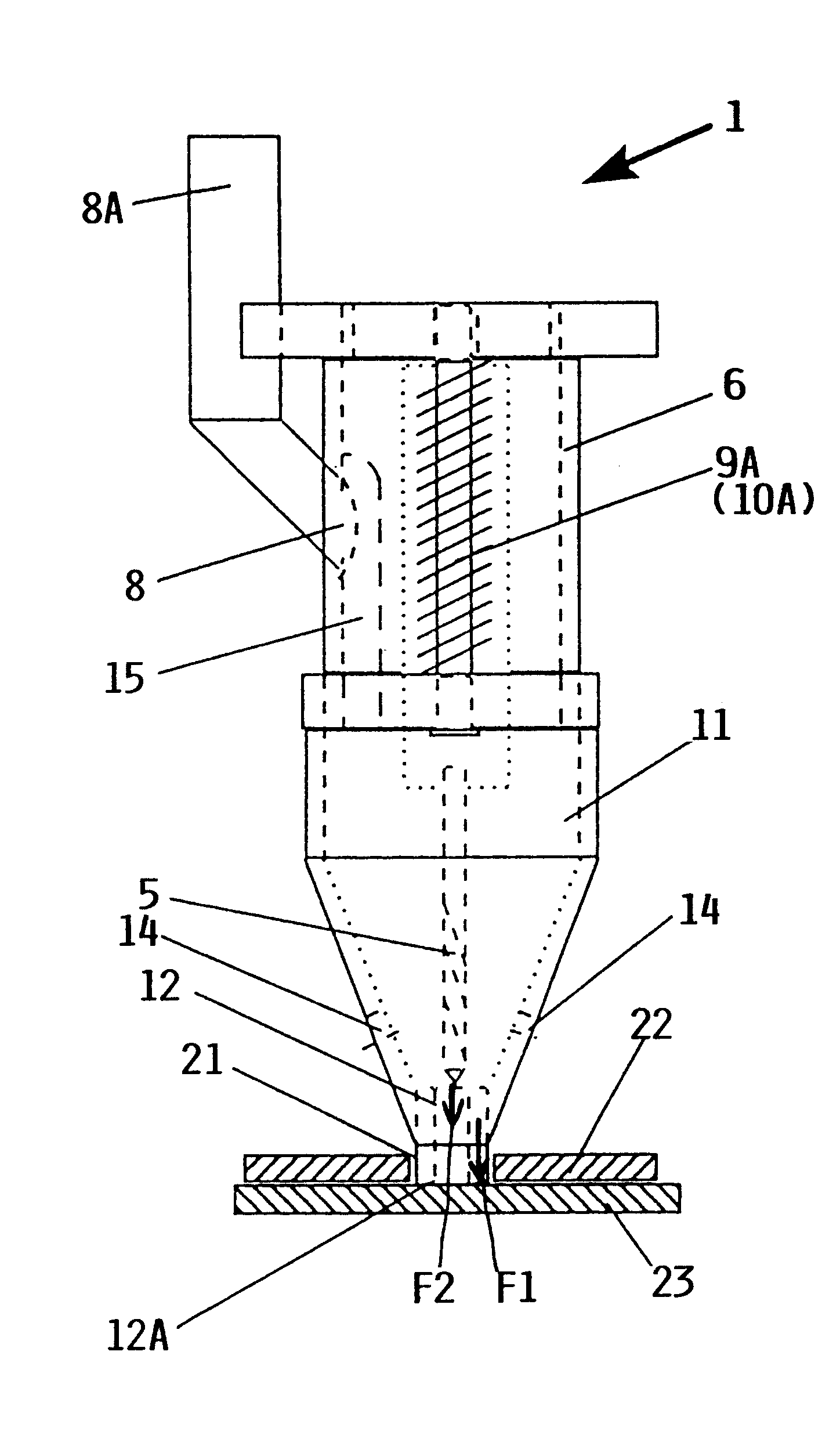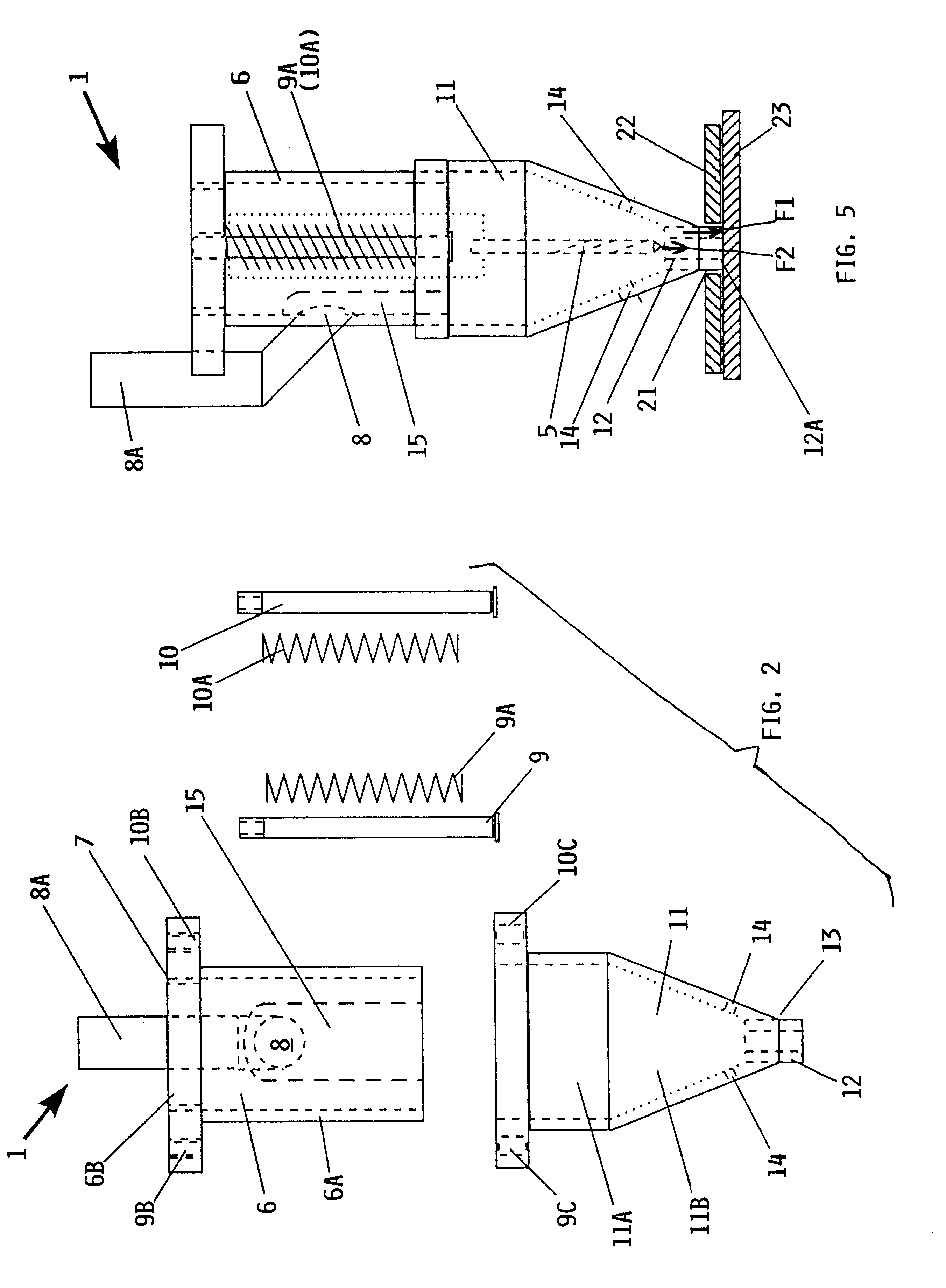Boring arrangement and method for boring holes in overlapping workpieces
a technology of overlapping workpieces and boring arrangements, which is applied in the direction of drilling/boring measurement devices, metal-working machine components, manufacturing tools, etc., can solve the problems of requiring considerable effort to remove or correct any such positioning inaccuracies, and the above-described assembly sequence is very work-intensiv
- Summary
- Abstract
- Description
- Claims
- Application Information
AI Technical Summary
Benefits of technology
Problems solved by technology
Method used
Image
Examples
first embodiment
FIGS. 3A and 3B show the pressing sleeve 12 schematically on an enlarged scale. In this embodiment, the above-mentioned air openings in the pressing sleeve 12 are particularly embodied as air holes 16 extending radially through the wall of the pressing sleeve 12. The wall of the pressing sleeve 12 is rather thin, preferably with a wall thickness of about 0.1 to 0.15 mm. The air holes 16 are simple bored holes having a diameter, for example, of about 0.3 mm, and being uniformly distributed about the circumference of the pressing sleeve 12. It is also possible to provide one or more air holes directly at the edge or end surface of the pressing sleeve 12, for example in the form of notches or half-round cut-outs provided in the end surface of the sleeve 12. Particularly, the number, size, and location of the air holes 16 is selected to achieve such an air circulation so that the suction air that flows in a direction toward the suction pipe 8A entrains and transports the chips and other...
second embodiment
In order to prevent a chip jam or accumulation of swarf material in the boring arrangement 30, the various swarf materials are transported by means of suction air in an axial direction away from the boring site and into the chip suction pipe 38A that leads into a chip suction pipe. For this purpose, a suction channel 38 is preferably provided in the inner sleeve 32. Since the pressing sleeve 12 is tightly pressed against the workpiece around the boring site, air openings must be provided in the pressing sleeve 12 in order to provide a sufficient air circulation to support the chip transport in the suction direction, without allowing chips to emerge radially out of the pressing sleeve 12 through these air openings. Possible embodiments of such air openings in the pressing sleeve 12 have already been described above with reference to FIGS. 3 and 4, whereby such air openings also apply to this second embodiment of a boring arrangement 30. In order to further support the air circulation...
PUM
| Property | Measurement | Unit |
|---|---|---|
| Thickness | aaaaa | aaaaa |
| Thickness | aaaaa | aaaaa |
| Force | aaaaa | aaaaa |
Abstract
Description
Claims
Application Information
 Login to View More
Login to View More - R&D
- Intellectual Property
- Life Sciences
- Materials
- Tech Scout
- Unparalleled Data Quality
- Higher Quality Content
- 60% Fewer Hallucinations
Browse by: Latest US Patents, China's latest patents, Technical Efficacy Thesaurus, Application Domain, Technology Topic, Popular Technical Reports.
© 2025 PatSnap. All rights reserved.Legal|Privacy policy|Modern Slavery Act Transparency Statement|Sitemap|About US| Contact US: help@patsnap.com



